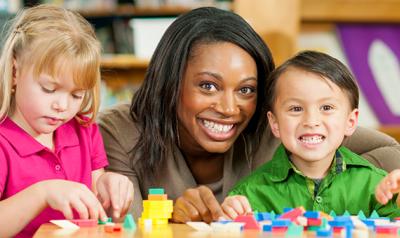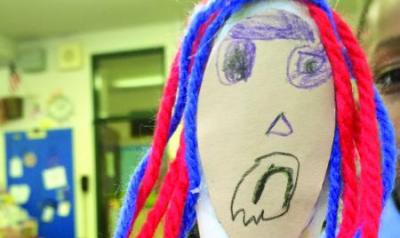DAP with Kindergartners, Ages 5-6
Kindergarten is a time of change, challenge, and opportunity. Because of the great individual variation among kindergarteners and the wide age range of kindergarten children teachers must be responsive to developmental, individual, and cultural variations.
Five- and 6-year-olds make great intellectual leaps. They go through a major shift, allowing them to develop more
- personal responsibility,
- self-direction, and
- logical thinking.
This growth affects development across physical, social and emotional, cognitive, and language domains. Kindergarten can shape a child’s overall outlook on and engagement in lifelong learning.
Teaching Kindergartners
Teachers must balance kindergartners’ varying abilities and needs while making sure that the curriculum fits appropriately between preschool and first grade.
Let’s see what DAP in kindergarten looks like:
Mrs. K sits with Keira, going over letter-sound correspondence. Then she goes to the block area to help Shelley. Mrs. K doesn’t make pronouncements; instead, she respectfully waits for the right moment to build on children’s existing conversations. She listens attentively and understands where, when, and how to intervene. She joins in the children’s play, modeling positive behavior. Her contributions are subtle, playful, and full of teaching.
Kindergarten teachers must fully engage in the social world of the classroom and be intentional in their interactions and instruction. With the many differences among—and wide age range of—kindergartners, teachers should be responsive to developmental, individual, and cultural variation. Thoughtful, sensitive teaching promotes a joy of learning and prepares children for further academic challenges.
The classroom example on this page is taken from K Today: Teaching and Learning in the Kindergarten Year.






